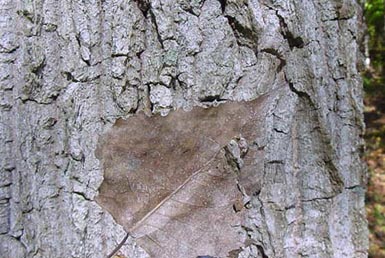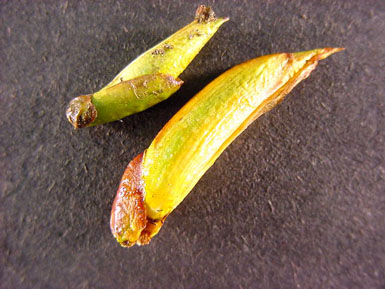Form: This is a medium-sized tree reaching 70-100 ft. in height and 2.5- 4 ft dbh. It generally has a thin, spreading crown and a straight bole.
Leaves:
Arrangement: alternate
Shape: deltoid with truncate base
Margin: crenate-serrate
Texture: glabrous
Venation: pinnate
Bark: The bark is yellow-green and smooth when young becoming ashy gray, thick, and furrowed with age*

Twigs and buds: Terminal buds have a shiny brown appearance and are conical in shape.
Flowers and fruit: Silky-haired seeds develop with shells that drop in early spring;

Distinguishing characteristics: The petiole is long and flattened. The buds have a resinous strong scented odor. Look for a more acuminate leaf tip and serrations with more of a hook shape to distinguish this species from big-toothed aspen.
Range: Eastern cottonwood is found north as far as New York, south into Florida, and west into Texas, but it is concentrated in the river bottoms of the eastern Great Plains.
Silvics: This species is very intolerant and occurs alluvial bottoms.
Ecological and cultural importance: This species is important for lumber, pulpwood and is slightly non-resistant to decay. Provide valuable habitat for deer and grouse in the Great Plains.